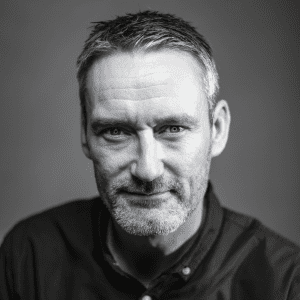BLOG
Organization and Culture: Looking into 2020 Trends
Ease hiring struggles with an improved employee experience–and plans to build young workers into your future.
It’s the time of year when organizational leaders are publishing their 2020 plans, hoping they are effectively responding to the disruptive forces and opportunities of the digital age.
We’ve similarly been reflecting within our Organization & Culture practice here at Prophet. Our views come from not just our ongoing research, but also from helping our clients around the world lead transformations of all shapes and sizes. We’ve distilled that experience into the three factors we believe will be critical to organizational transformations in 2020.
In setting out these opportunity areas for focus, we are not saying these are the only big-ticket items that should occupy your attention. But it is our belief that the ones we have selected are going to become points of differentiation in accelerating successful organizational transformation.
1. Connecting Purpose and Ambition
We’ve written previously about the arrival of “purpose” as a critical component in transformation; bringing a sense of meaning and direction by answering why an organization has its place in the world. We have helped many clients arrive at their north star and to think beyond words about what needs to happen daily for them to infuse true purpose into their organizations and thereby align behaviors and accelerate decision-making across the business.
But having a purpose alone is not enough to help people through the dizzying world of change we are in. What our 2019 research revealed is needed, and what we are now seeing more of in successful transformations, is codifying purpose through a clear, measurable and time-bound ambition. For some organizations, this is as narrow as painting a comprehensive picture of what a digital transformation will look like in their own firm and for their customers. For others, it means creating a more tangible set of future outcomes that cater to the complete stakeholder ecosystem, both in and outside of the organization.
2. Incorporating the Next Generation of Workforce Planning into Your Talent Strategy
We see organizations realizing more starkly than ever before that they were designed for a different era. New operating models are no longer a consideration – they are becoming a necessity with significant implications for an organizational redesign. Tinkering at the edges of this problem is no longer viable.
Workforce planning is a key strategic imperative, but it has moved firmly beyond predicting talent needs to a synthesis of three formerly separate disciplines: functional and enterprise visioning, business architecture, and powerful people analytics. All three of these disciplines impact how you organize talent to deliver on your business ambition. Prior approaches were frequently focused on cost-cutting and demotivating, decoupled from growth strategy, and executed with the thinnest veneer of quantitative insights to support them. We’re toe-to-toe with this issue with several clients right now and we’ve found that the next generation of workforce planning is different from past approaches because it’s:
- Linked to vision and ambition
- Driven by business architecture and not existing organization charts, it’s more tightly coupled to longer-term business strategy
- Facilitating more strategic decision-making as quantitative tools help SaaS people data platforms really come into their own
On top of this, the reskilling component of workforce planning has now ballooned as a result of years of declining learning and development investment and the use of often ineffective, low-cost alternatives. The future is already here for some leading companies making multi-billion-dollar investments in reskilling in order to remain competitive.
3. EX=CX=EX
Employee experience (EX) has long been talked about as the acid test of any employer brand – the reality of expectations met or otherwise. But in a world where consumer brands have shifted to build their worth through experience first and foremost – suddenly the connective tissue between EX and Customer Experience (CX) is a growing area of focus and can easily hit the headlines when it clearly falls short – notably recently at the direct-to-customer luggage brand, Away.
This is made even more complex through the interplay between technology and humanity – and the challenge that EX has lagged light-years behind CX in terms of technological enablement. The sad truth is that so many “employee tools” are actually designed to cut costs and make the lives of Finance, HR and Operations teams easier – rather than deliver a customer-grade employee experience. As a result, we see HR leaders looking to approach EX differently and learn from CX innovation. And there are also CX leaders taking a more holistic view of the organization and looking at how EX can really drive differentiation for their goals. Ultimately, there is a big prize: EX is powerful and makes work easier for employees, thereby delivering both direct and indirect benefits to the end customer and reinforcing the value proposition for employees to join a firm and thrive – win, win, win.
“Our views come from not just our ongoing research, but also from helping our clients around the world lead transformations of all shapes and sizes.”
FINAL THOUGHTS
One final point. There is one theme we have not yet called out but, in our view, it flows through our identified focus areas and that is humanity. As symbolized by our Human Centered Transformation model, the organization is a macrocosm of people. Too often leaders continue to mistake the pursuit of digital innovation as separate from the people agenda, which inevitably fails to drive the outcomes they seek. The value created by any organization is rooted in human contribution. Its transformation therefore needs to be viewed in that way.
There is little point in reflecting on 2019 if it does not drive action in 2020. We suggest that you closely consider plans for the year ahead to determine if they adequately address these three transformation focal points and if not, make them your first new year resolutions.

